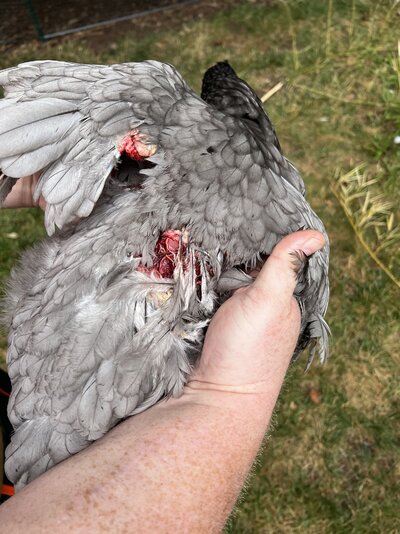Redheadhomestead
Songster
Hey guys we’ve had our first flock predator attack. 1 found dead 1 not found at all and one found maimed.
The maimed chicken has a few spots from the fight but one spot that looks really bad. I immediately thought to put her down when I saw that spot because it looked very bad to untrained eye, but as I continued to watch her she acted very normal. Pecking around the yard and hopping for leaves so I wanted to come here for a second opinion. With wounds like the attached pic, Is this chicken stoic and waiting to die or is there some form of home care I can provide to her with antiseptics/powders/solutions. Thank you for your help.
My wife has grew up around horses and mentioned something called wonder dust but neither of us have chicken experience.
The maimed chicken has a few spots from the fight but one spot that looks really bad. I immediately thought to put her down when I saw that spot because it looked very bad to untrained eye, but as I continued to watch her she acted very normal. Pecking around the yard and hopping for leaves so I wanted to come here for a second opinion. With wounds like the attached pic, Is this chicken stoic and waiting to die or is there some form of home care I can provide to her with antiseptics/powders/solutions. Thank you for your help.
My wife has grew up around horses and mentioned something called wonder dust but neither of us have chicken experience.




